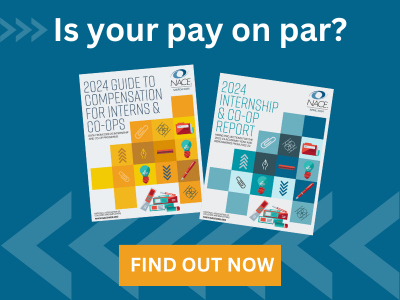Spotlight for Recruiting Professionals
For more than 25 years, NI's legacy Engineering Leadership Program (ELP) and individual functional new graduate strategies brought talented university graduates into the company to drive innovation and build its culture.
However, as the company went through increasingly rapid changes due to shifts in the market, it became clear that significant adjustments were needed to NI’s programs and strategies due to skillset misalignment for the business, new graduate attrition, and declining offer acceptance rates, explains Jake Heller, senior manager for university recruiting and Generation NI.
“There were a number of ways we could tell change was needed,” Heller says.
“One of the most significant was that the markets were changing from both a business and talent perspective. The expectations of what our customers needed from us were changing, which required us to shift as a company. Student’s expectations of us were also changing, and we weren’t connecting with candidates like we had been in the past. We needed to change our strategies to make sure we could stay competitive.”
In 2017, NI undertook a major effort to revamp its ELP, with the new version scheduled to launch in 2019.
“As we were working on revamping that strategy, we realized that we shouldn’t just be working on the ELP, but we should be taking a more holistic look at all of our new graduate, internship, and student programs,” Heller notes.
“In 2019, we decided to end the ELP and began building a new enterprise-wide solution. We knew that we needed to change, but the question became how we can revamp our strategy without losing what made us who we are.”
Heller says NI’s approach to answering this question was rooted in:
- Distilling out the key elements of its legacy strategies to the outcomes they served in order to preserve them for the future;
- Identifying the practical and emotional needs of the early talent strategy customers (both business leaders and new graduates) to root the strategy in; and
- Aligning the revamped strategy with larger company objectives to magnify impact and adoption.
“In our journey to revamping the strategy, we used the first two steps in tandem to separate the past activities and mechanisms from the outcomes business leaders and new graduates valued from them,” he says.
“This allowed us to accomplish the valued outcome through a new mechanism, while maintaining the elements of our program that made us unique.”
Heller and his team spoke with nearly 100 managers, business leaders, new graduate hires, and external industry professionals to understand and consolidate the outcomes. The highest-level outcome for both students and business leaders was that NI’s new strategy should accelerate the time is takes students to make a positive impact on the organization.
“We needed to do this while being true to our people-first values of being bold, kind, and connectors,” he explains.
“From this flowed three common needs that the strategy could address through a new program: targeted skill sets for roles, enterprise-wide knowledge, and streamlined role-based development.”
The Generation NI program launched earlier this year. It is a holistic, enterprise-wide strategy through which NI efficiently addresses talent and other challenges, and that encompasses the recruitment, onboarding, and development experience for students that includes:
- Consulting with functions for future talent needs and recruiting that talent;
- A consistent shared experience for all students; and
- Data-driven, modular, flexible development programs.
“In order to bring this strategy to life,” Heller explains, “we used a customer-centric approach to get buy-in from business leaders and prospective candidates. We shared the vision for the new strategy and worked with them to understand how the program could add value to them.”
This, he points out, was particularly important in balancing the perspective of the business, while creating a meaningful experience for the new graduates and interns.
“A key step in working through the change management from the long-held legacy strategies to an aligned new strategy was truly understanding the needs of the customers and then following up on how those needs were being met,” Heller says.
“Furthermore, we realized that the impact of the program could be magnified and better institutionalized by connecting it with larger company initiatives. We recognized the significant opportunity that an improved new graduate and intern strategy could have toward helping NI accomplish our ambitious DEI goals due to the design of the program to bring in diverse new graduates and provide the needed development and support to drive inclusion.”
Connecting the new graduate strategy with larger company initiatives elevated the visibility of the program across the company and helped to broaden the impact the program can make.
“While we are still collecting data on the recently launched Generation NI program, we are seeing some promising initial results from our cohort of new graduates,” Heller notes.
“As a part of the Generation NI program, a small, selective cross-functional rotation path was created. From this cohort, we have seen that they have been able to significantly impact their organizations on average four weeks after starting with a new team.”
He recommends that organizations undergoing or considering a similar shift do so in tight alignment with the organization’s business groups and also identify, retain, and grow what makes the organization unique.
“Take time to understand what the organization’s legacy is,” Heller says.
“What are the things people said they really liked about your program? Those are the things you don’t want to lose. Focus on the outcomes of those legacies, which will allow you to separate the activity that was used to achieve that legacy and find new methods to continue to achieve it. For example, what ways can we use new technology to build the communities our candidates have always valued? It’s about focusing on what people care about, but allowing the mechanisms to change over time.”






